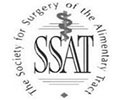Gastro-oesophageal Reflux Disease
Gastric reflux, also called gastro-oesophageal reflux disease (GORD), is a condition where the stomach's contents (food or liquid) rise up from the stomach into the esophagus, a tube that carries food from the mouth to the stomach. Food mixed with the stomach's digestive acids can irritate and damage the esophagus.
Causes
Normally, the stomach's contents are retained in the stomach with the help of the lower oesophageal sphincter (LES), a muscle that contracts and relaxes to maintain the one-way movement of food. However, gastric reflux occurs when the LES weakens. The exact cause of this is not known, however certain factors including obesity, smoking, pregnancy and possibly alcohol, may contribute to GORD. Common foods such as spicy foods, onions, chocolates, caffeine containing drinks, mint flavourings, tomato-based foods, citrus fruits and certain medications can worsen gastric reflux.
Impact
Living with gastric reflux is inconvenient as symptoms can severely interfere with your life. You may have to follow certain dietary restrictions and reflux occurring in the night can hinder a good night's sleep, thereby affecting alertness and productivity the next day.
Anatomy
Food travels from the mouth through the esophagus, a long, narrow tube that opens into the stomach. This food pipe is lined by muscles that expand and contract to push food down the tube, a process called peristalsis. The stomach secretes acid and other digestive enzymes for the digestion of food and stores food before it enters into the intestine.
A band of muscles called the lower oesophageal sphincter (LES) are present at the junction of the esophagus and the stomach. This acts as a valve, preventing the reflux of acid and chyme (food mixed with acid and digestive enzymes) from the stomach into the food pipe.
Symptoms
Heartburn is usually the main symptom of GERD, characterized by a burning-type pain in the lower part of the mid-chest, behind the breast bone. Other symptoms include a bitter or sour taste in the mouth, trouble swallowing, nausea, dry cough or wheezing, regurgitation of food (bringing food back up into the mouth), hoarseness or change in voice and chest pain.
Diagnosis
Your doctor may order some of the following tests to diagnose gastric reflux:
- Endoscopy: allows the doctor to examine the inside of your esophagus, stomach and portions of the intestine with an instrument called an endoscope, a thin flexible lighted tube
- Barium X-rays: involves swallowing a barium preparation, which can be detected through X-rays
- Twenty four-hour pH monitoring: involves inserting a tube through your nose into the esophagus, and positioning it above the LES. The tip of the tube contains a sensor which can measure the pH of the acid content refluxed into the esophagus. The tube will be left in place for 24 hours.
- pH capsule: allows measuring acid exposure in the esophagus. A small wireless capsule is introduced into the esophagus by a tube through the nose or mouth. The tube is removed after the capsule is attached to the lining of the esophagus. The pH sensor transmits signals to a computer which collects the data about the acid exposure over the next 24 hours. The capsule eventually falls off of the esophagus lining and is safely passed in the stool.
- Impedance study: requires two probes; one is placed in the stomach and the other just above the stomach. The dual sensor helps to detect both acidic and alkaline reflux.
Treatments
Treatment aims at reducing reflux, relieving symptoms and preventing damage to the esophagus. Some of the treatment options include:
- Antacids: over-the-counter medicines that provide temporary relief to heartburn and indigestion by neutralizing acid in the stomach
- Other medications: reduce the production of acid in the stomach
- Endoluminal gastroplication or endoscopic fundoplication technique: minimally-invasive method that requires the use of an endoscope with a sewing device attached to the end, known as an EndoCinch device. This instrument places stitches in the stomach below the LES to create a plate which helps reduce the pressure against the LES and strengthen the muscle.
- Fundoplication: is a surgical procedure in which the upper part of the stomach is wrapped around the end of your esophagus and oesophageal sphincter, where it is sutured into place. This surgery strengthens the sphincter and helps prevent stomach acid and food from flowing back into the esophagus.


















